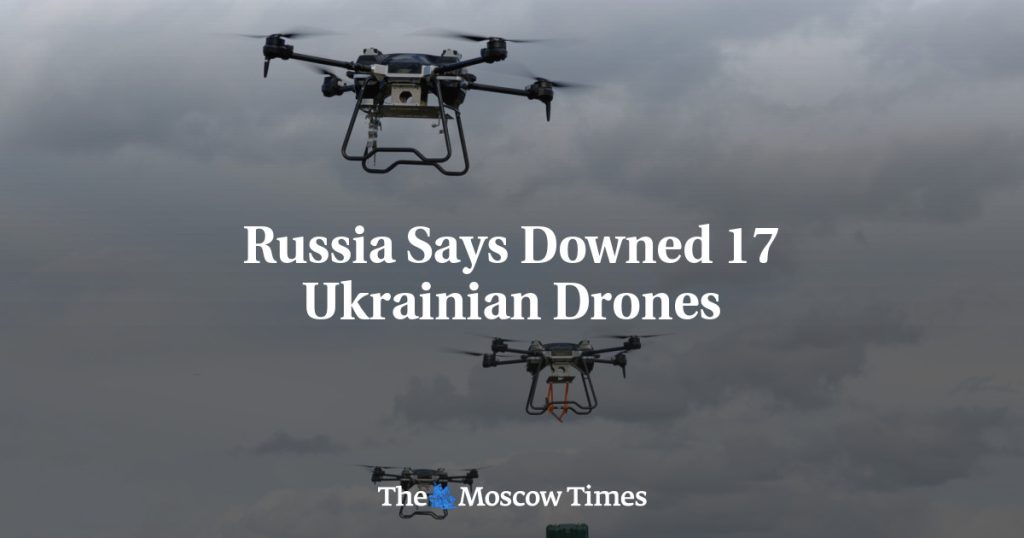The Russian defense ministry reported that they shot down 17 Ukrainian drones in several western regions overnight. The majority of the drones were intercepted in border regions, with nine being downed in Bryansk, three in Kursk, and two in Belgorod. Additionally, three drones were destroyed in the interior region of Kaluga. These incidents come amidst increased tensions between Russia and Ukraine, with Ukraine claiming to have targeted Russian refineries and oil storage facilities in retaliatory strikes. In response, Moscow has launched major strikes on Ukraine’s energy facilities, leading to production disruptions, blackouts, and energy rationing across the country.
The ongoing conflict between Russia and Ukraine has escalated in recent months, with both sides engaging in military actions and drone warfare. Ukraine has accused Russia of violating its sovereignty and territorial integrity, leading to the implementation of sanctions and condemnation from the international community. Russia, on the other hand, has defended its actions as necessary to protect its interests and support pro-Russian separatists in eastern Ukraine. The use of drones in this conflict has become increasingly common, with both sides employing them for reconnaissance, surveillance, and targeted strikes.
The downing of the 17 Ukrainian drones by Russia highlights the volatility and complexity of the situation in the region. The use of unmanned aerial vehicles (UAVs) in military operations has been a growing trend globally, with drones providing advantages in surveillance, intelligence gathering, and precision strikes. However, the use of drones in conflict zones also raises ethical, legal, and humanitarian concerns, particularly when civilian populations are at risk. The increasing use of drones by state and non-state actors has led to calls for stronger regulatory frameworks and international cooperation to address the challenges posed by this technology.
The impact of the drone strikes on Russian and Ukrainian infrastructure, particularly in the energy sector, has had far-reaching consequences for both countries. The targeting of refineries and oil storage facilities has disrupted oil and gas production, leading to shortages, blackouts, and energy rationing in Ukraine. The destruction of critical energy infrastructure has also raised concerns about the environmental and economic impact of the conflict, as well as the potential for escalation and further instability in the region. Both Russia and Ukraine are heavily dependent on energy resources for their economies, making the energy sector a key battleground in their ongoing conflict.
Despite efforts to de-escalate tensions and pursue diplomatic negotiations, the conflict between Russia and Ukraine shows no signs of abating. The use of drones and other advanced weaponry by both sides has intensified the fighting and increased the risks to civilian populations. The international community has condemned the violence and urged both sides to seek a peaceful resolution to the conflict. However, with competing interests and deep-seated grievances on both sides, finding a lasting solution to the conflict remains a formidable challenge. As Russia continues its military actions in Ukraine, the situation on the ground remains fluid and unpredictable, with the potential for further escalation and humanitarian crisis looming large.
In conclusion, the recent drone strikes by Russia on Ukrainian territory highlight the ongoing tensions and hostilities between the two countries. The use of drones in military operations has become a key aspect of modern warfare, providing strategic advantages and capabilities for both offensive and defensive actions. However, the use of drones also poses risks and challenges in terms of civilian casualties, infrastructure damage, and escalation of violence in conflict zones. As Russia and Ukraine continue to engage in military actions and drone warfare, the need for international cooperation and diplomatic efforts to resolve the conflict peacefully becomes more urgent than ever. The impact of the conflict on civilian populations, critical infrastructure, and regional stability underscores the importance of finding a durable and inclusive solution to the crisis in Eastern Europe.


